Eduard's 1/48 scale
Zlin Z-226T Trener
by Roland Sachsenhofer

Isn't it true that in aviation the sound of some manufacturers' names triggers entire chains of associations? The images that come to mind when we think of "Heinkel", "Avro" or "Grumman" will differ in detail, but the fact is that images certainly appear in our imagination! If you try this with the word "Zlin", agile and competition-winning aerobatic aircraft appear in my mind, which, despite all their focus on the high demands of aerobatics, always knew how to impress with their balanced beauty of form.
About the Zlin Z-226B
Eduard has recently released a Zlin Z-226 in completely new moulds. A good choice, because the Z-226 and its "close relatives" in the form of the Z-126, the Z-26 and the following Z-336 are among the best known and most widely used models produced by this traditional Czech aircraft manufacturer.

The history of the type begins in 1946 with a tender for a light military training aircraft. Karel Thomas, the leading designer at Zlin, submitted a design based on the Klemm Kl 35, a light sports aircraft. As the Z-26, the new design went into series production from 1947. A total of 173 models were produced until 1953, before the improved Z-126 replaced the type on the factory lines of the Zlin plant based in Ostrokovice in the eastern Czech Republic.
However, other versions of this type, all of which became known as "Trener", were released shortly afterwards: the variant designated Z-226 matched the Z-126 in all details, only the powerplant had been exchanged for a more powerful engine. A Walter Minor III-4 had been replaced by a more powerful Walter Minor 6-III with 160 hp.
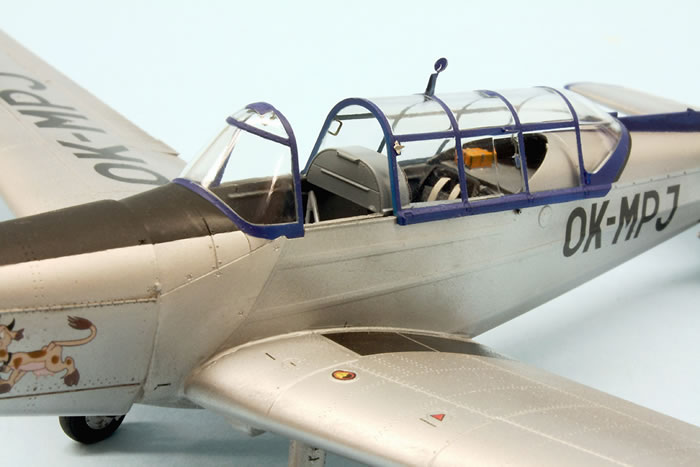
The performance of the aircraft was ideal for its use as a light and aerobatic sports aircraft that could also be used for glider towing. With a take-off mass of a good 800 kilograms, the lightest version of the aircraft took off after only 85 metres, and the landing consumed a similarly short distance. From a good 80 km/h, there was enough airflow on the wings to allow the Z-226 to take off, the maximum speed levelling out at around 200 km/h.
The Z-226 was delivered in two main versions, whereby the epithets already gave an idea of its specialisation: the Z-226B "Bohatýr" (roughly and quite self-ironically: "strong warrior") was intended as a towing machine. If it was flown with the front seat removed and without front instrumentation, it saved 45 kilograms of empty weight, which could be converted into towing power.
The Z-226T "Trener" remained with its original name - and also with the front seat. The Z-226A "Akrobat" reverted to a single-seat configuration, with a canopy cut tightly over the pilot's seat, giving the 226, which until then had been rather comfortably and classically proportioned, an impressively racy appearance. The 226A and the 226AS "Akrobat Spezial" were pure aerobatic aircraft. A total of 364 models of all versions of the Z-226 were produced.
Z-226s not only flew in Czechoslovakia, but were literally represented worldwide. The Soviet Union, the GDR and Egypt each had a stock of well over 50 "Treners", which were used in both the civilian and military spectrum. The armed forces of the CSSR flew the "Trener" under the designation C-205.
My Model
My model presented here with the serial number 255 shows a Z-226B built in 1955. With the registration OK-MPJ it was flown in the 70s by the "Kladno Aero Club".
A remarkable feature of this aircraft, which is otherwise painted purely in the blue/silver factory colours of Zlin, is the "happily jumping cow" painted on the left cowling. Josef Valenta, an artistically gifted member of the Aero Club is responsible for this, whereby this flying club could enjoy a whole series of aircraft embellished by Valenta's hand.
At the beginning I described my great joy when I came across this new kit. This joy was immediately "doubled": interestingly enough, the first issue of the Z-226 was immediately offered in the form of the popular "Dual Combo". Part of this edition is a rich equipment with marking variants, because this double pack brings it to eleven different variations - and I may say casually, one more attractive than the other!
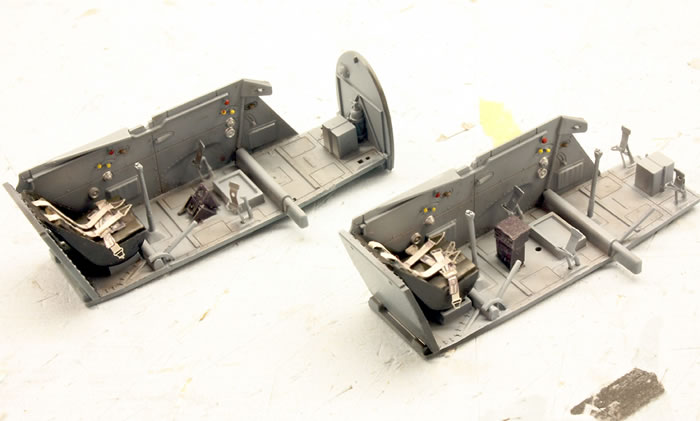
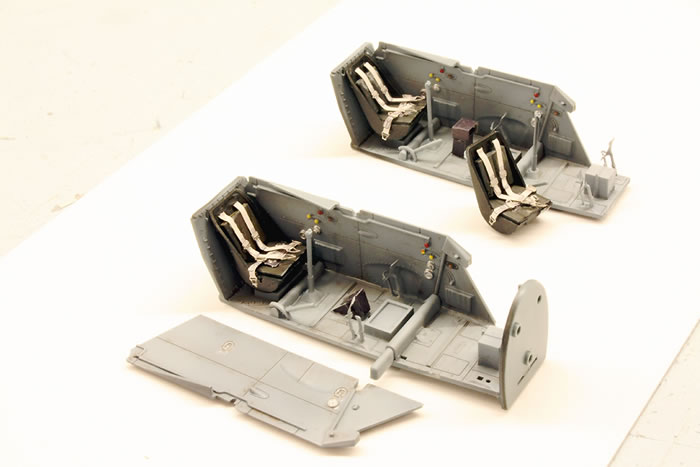
Not only are the decal sheets abundant (and the share that is used for the scrap box), but the wealth of variants is also plentiful, which is reflected in the large number of enclosed plastic parts. By no means all of them are used: the instructions guide the reader in a meticulous manner through the lavish range of parts, reliably taking into account the numerous peculiarities of the individual machines that can be represented. However, the attention to detail is so great that a close study of the instructions is highly recommended.
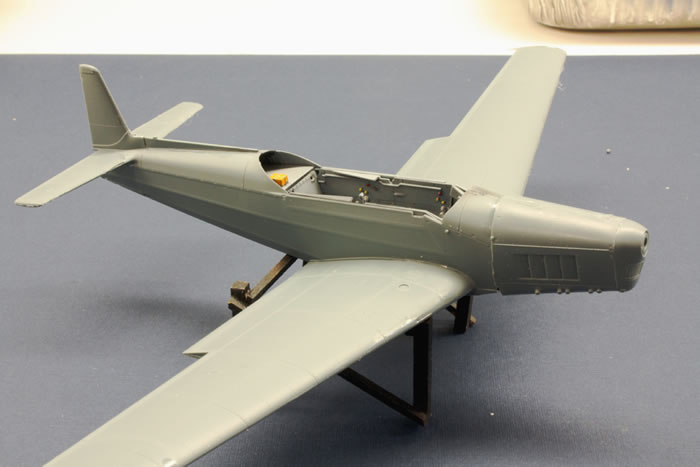
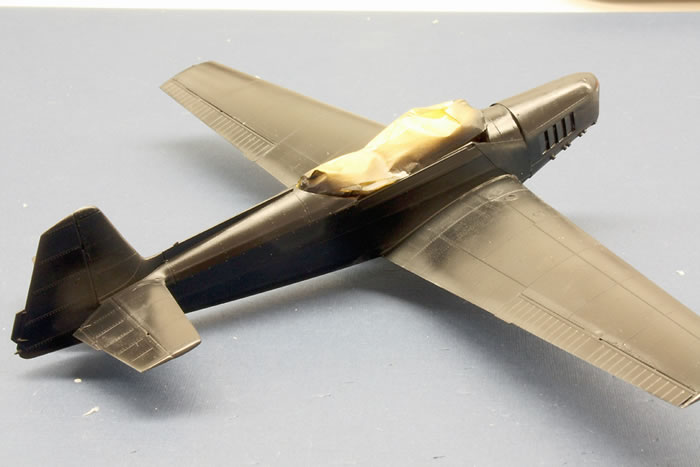
Finally, I would like to emphasise the high, indeed remarkable quality of all parts! This includes the plastic parts, the transparent cockpit canopies and the decals as well as the enclosed etched part boards. Here, too, the word " opulent", which has often been mentioned here, is absolutely appropriate.
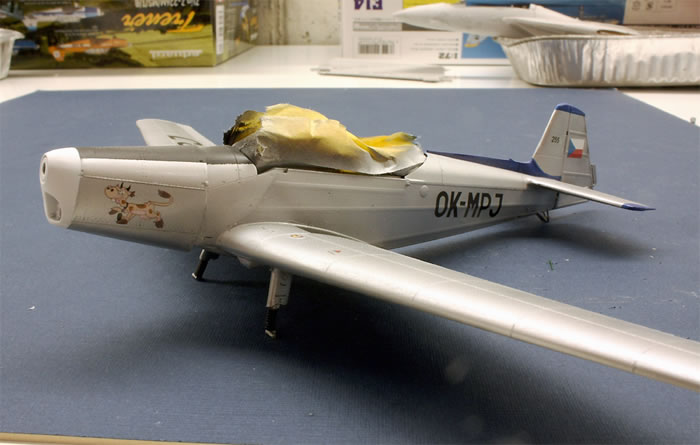
To close the loop: after this building experience, I am certain of another association with the term "Zlin": always the thought of an informative, entertaining and colourful model building experience will now enrich the flashing images of an agile and successful aerobatic machine!
In a following article I would like to present the second Z-226 of this double pack to you; in the final pictures you can already see it standing next to OK-MPJ.
If you are interested in the building process, please have a look here on Scalemates:
https://www.scalemates.com/profiles/mate.php?id=10148&p=projects&project=113685
As ever, remarks will be appreciated: ro.sachsenhofer@gmx.at
Model, Images and Text Copyright ©
2022 by Roland Sachsenhofer
Page Created 11 January, 2022
Last Updated
11 January, 2022
Back to HyperScale Main Page

|
Home
| What's New | Features | Gallery | Reviews | Reference | Resource Guides | Forum |